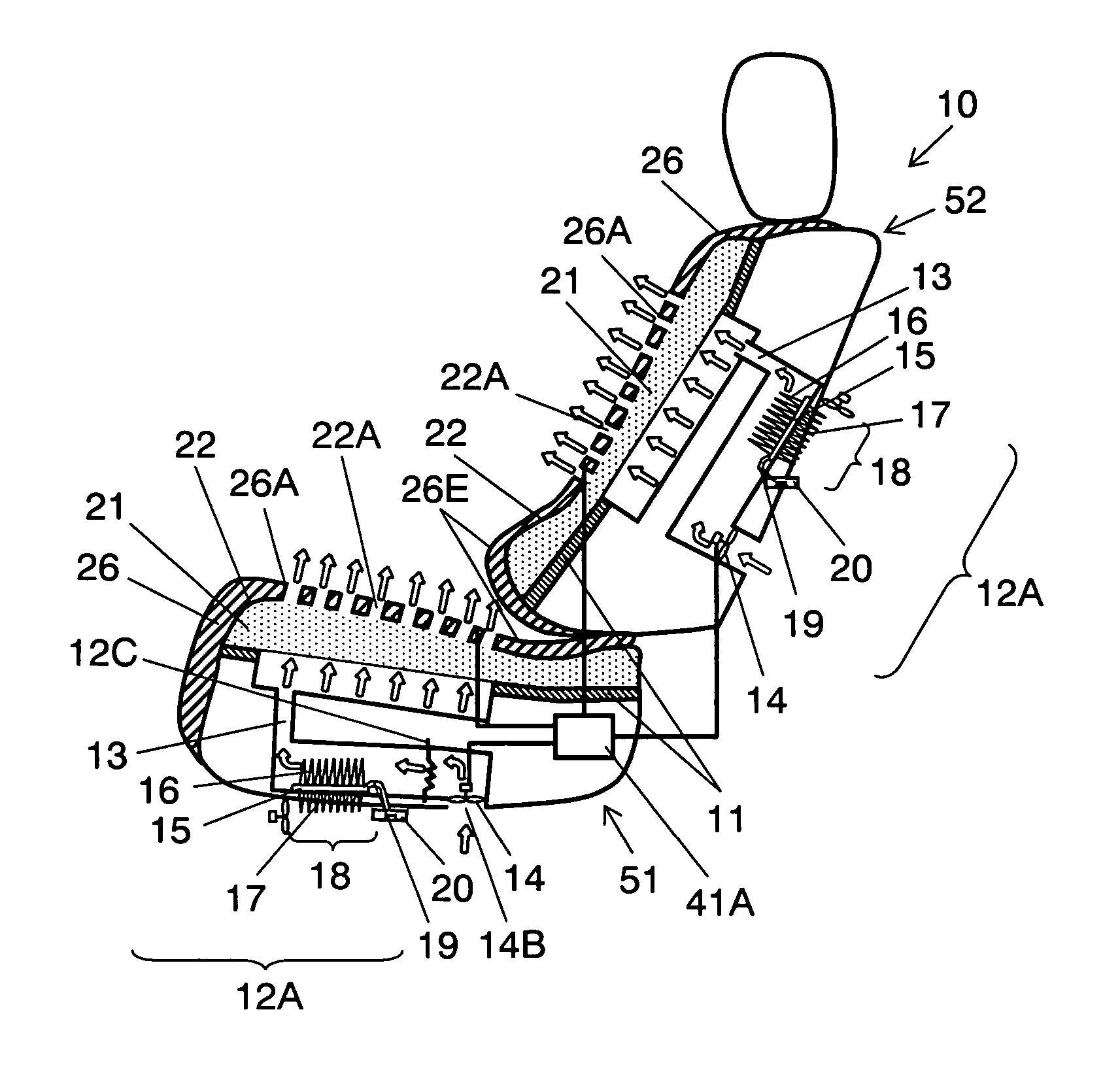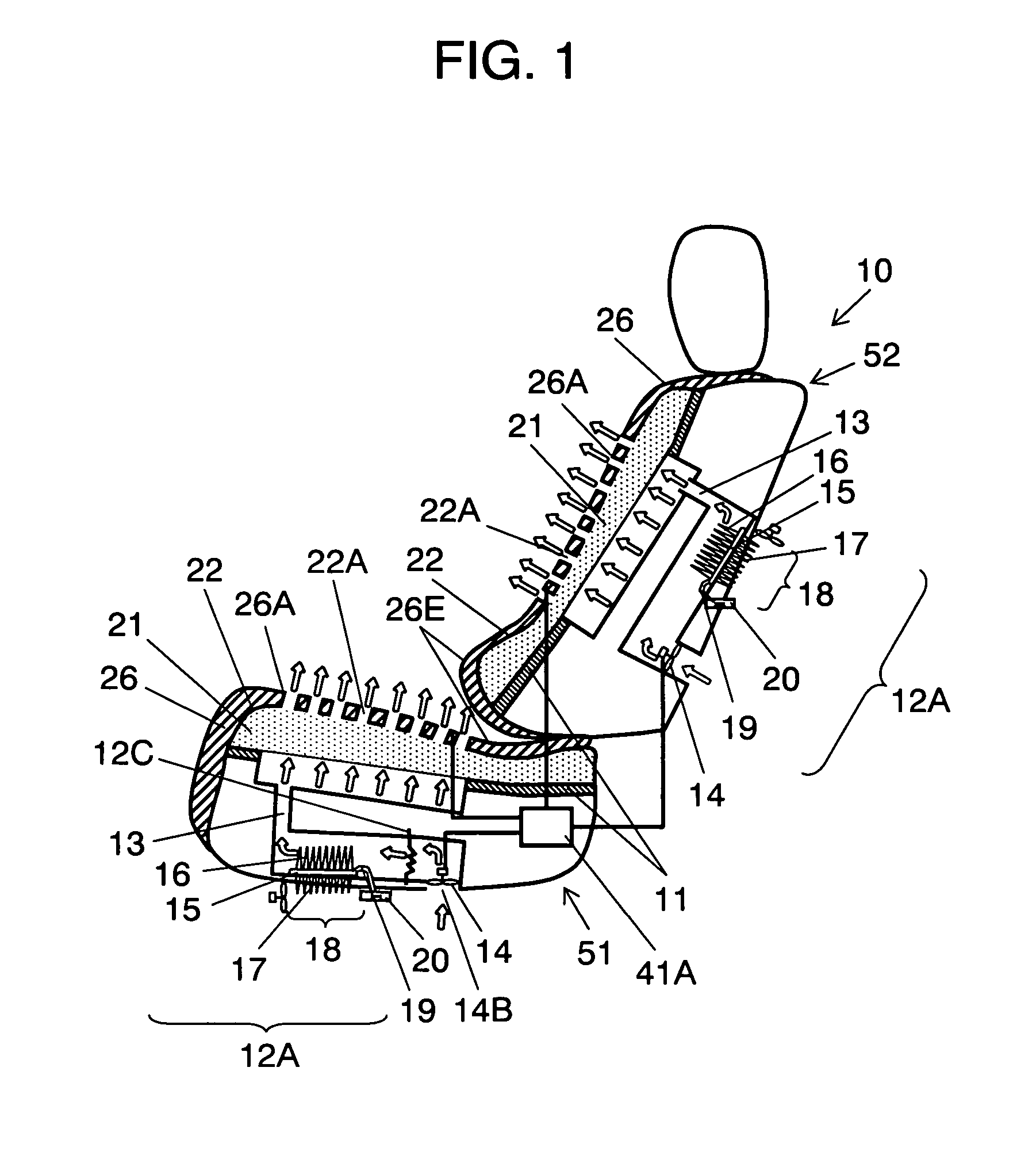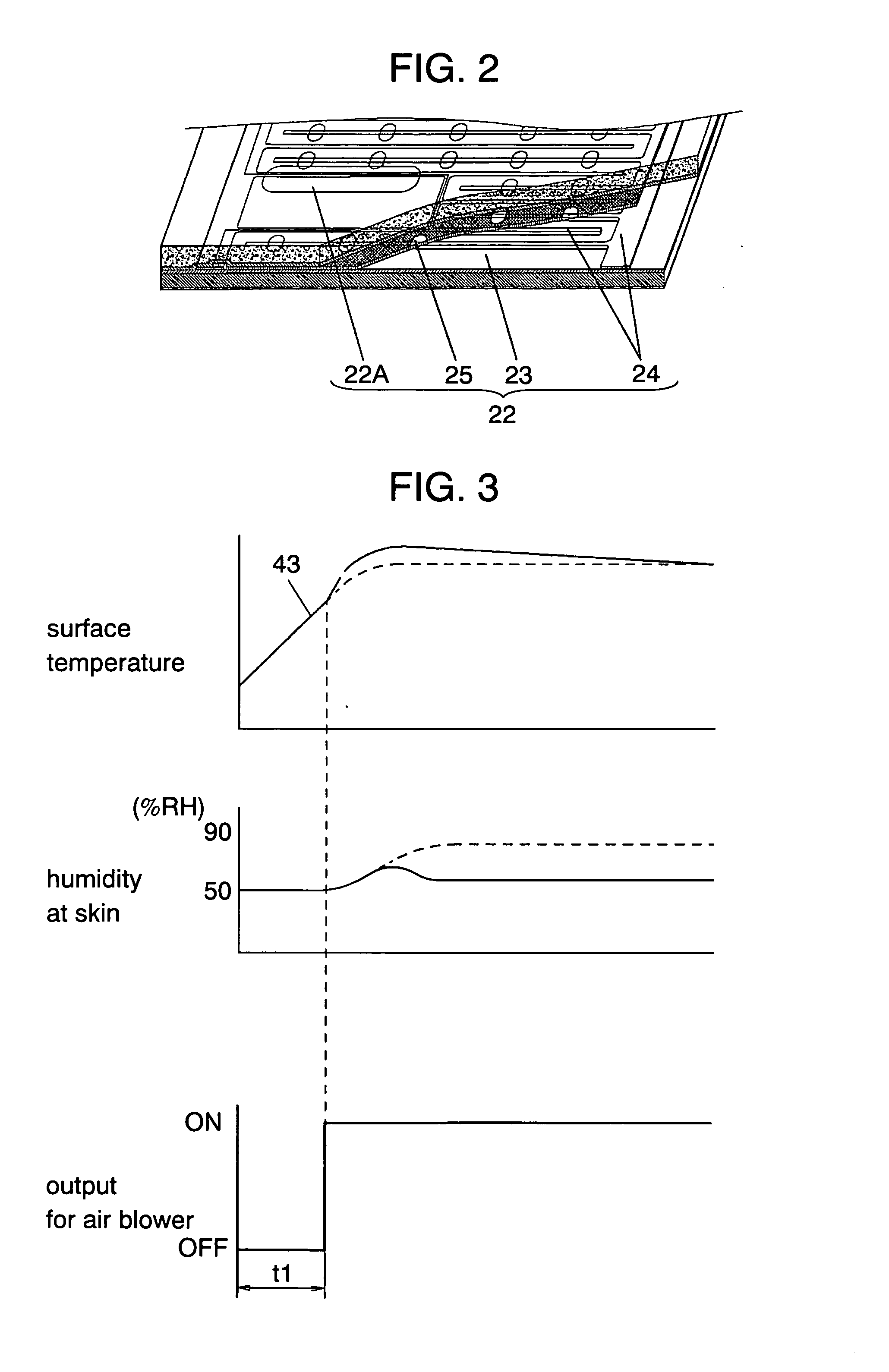Air Conditioned Seat Device And Air Conditioning System Using The Same
a seat device and seat technology, applied in the field of air conditioned seat devices and air conditioning systems, can solve the problems of limiting design, inability to provide small holes, and insufficient vaporization of steam to resolve steaminess
- Summary
- Abstract
- Description
- Claims
- Application Information
AI Technical Summary
Problems solved by technology
Method used
Image
Examples
first exemplary embodiment
[0048]FIG. 1 is a sectional view of an air conditioned seat device according to the first exemplary embodiment of the present invention. FIG. 2 is a schematic diagram of a PTC heater used for the air conditioned seat device.
[0049] In seating portion 51, support member 11 forming the framework of the seat is provided with duct 13, a first duct passing air therethrough. Air conditioning unit (“conditioning unit” hereinafter) 12A for conditioning air is disposed halfway through duct 13. Air blower 14 such as a sirocco fan, a first air blower located at the bottom of the seat, takes air in through air inlet 14B provided in a part except seating surface 26E and sends the air to conditioning unit 12A. The conditioned air is sent toward seating surface 26E through duct 13. Support member 11 has elasticity in which the squash depth of the hip joint position is at least 30 mm and at most 200 mm when a typical human body weighing 75 kg is seated. The elasticity causes decreasing the concentr...
second exemplary embodiment
[0073]FIG. 5 is a longitudinal sectional view of an air conditioned seat device according to the second exemplary embodiment of the present invention. In this embodiment, surface temperature sensor (sensor, hereinafter) 42 made of such as a thermistor is arranged at a position where PTC heater 22 does not contact the human body and its temperature is equivalent to the surface temperature. That is, sensor 42 senses the temperature near skin 26, and then outputs a sensing signal to control unit 41B. Control unit 41B controls PTC heater 22 and air blower 14 according to the signal from sensor 42. Flexible pad 48 such as a thin sponge-like pad with high air permeability is disposed between PTC heater 22 and skin 26. The makeup otherwise is the same as that of the first exemplary embodiment.
[0074] In the above-mentioned makeup, control unit 41B drives air blower 14 when the surface temperature reaches “T1” after starting energization of PTC heater 22; and stops air blower 14 when the su...
third exemplary embodiment
[0078]FIG. 7 is a sectional view of an air conditioned seat device according to the third exemplary embodiment of the present invention, during a recycle-mode operation. FIG. 8 is a sectional view of the same during a dehumidify-mode operation.
[0079] In the present embodiment, air conditioning unit 12B is provided with dehumidifier 31 having a dehumidification agent (adsorbent) such as zeolite or silica gel with an adsorptive property. The dehumidification agent in dehumidifiers 31 is heated by heater units 32, which are first and second heater units such as electric heaters, through convection, radiation, or conduction. Vent 33 is further provided to communicate dehumidifier 31 to the outside of air conditioned seat device 10. Outlet air duct selector (selector, hereinafter) 35 which is a damper or the like is provided to be driven by stepping motor 34 or the like. Selector 35 closes duct 13 when vent 33 is opened and opens duct 13 when vent 33 is closed. Control unit 54 is connec...
PUM
 Login to View More
Login to View More Abstract
Description
Claims
Application Information
 Login to View More
Login to View More - Generate Ideas
- Intellectual Property
- Life Sciences
- Materials
- Tech Scout
- Unparalleled Data Quality
- Higher Quality Content
- 60% Fewer Hallucinations
Browse by: Latest US Patents, China's latest patents, Technical Efficacy Thesaurus, Application Domain, Technology Topic, Popular Technical Reports.
© 2025 PatSnap. All rights reserved.Legal|Privacy policy|Modern Slavery Act Transparency Statement|Sitemap|About US| Contact US: help@patsnap.com



